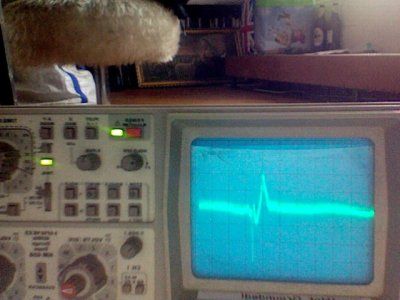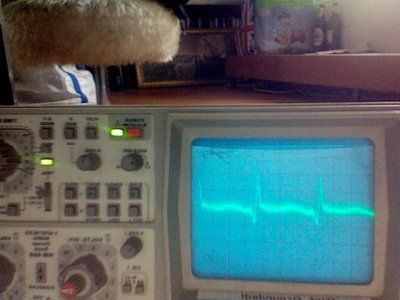R
roflcopta
.
einfach mal in englisch: deutsch geht natürlich auch 
Its a 14bit model with groove midi interface.
When the Problem started there was only VCO1 dead, VCO2 was still working from time to time but now both are dead.
The test Program says its Voice A on the second MOD, i also swapped the boards and it turned out that the fault must be on this Board and not on the INT or MOD CON.
I did the Calibration Procedure till point 5 (VCO MOD) and those Point before were all in the tolerance and i just did some finetunning, so Power etc should be ok.
On the Voice the Noise is still Working and so do also the VCF and VCA.
When i turn the Volume really loud i fund out that i can hear the VCO1 & VCO2 as well on a very low level and they seem to work normally…
so i guess its somewhere between the VCOs and the Filter, maybe an OP?
I also did some measurements with the scope and compared them with the other working Voice (B) on the Board (and some other Voices as well), so here are the differences ive found:
TP1B: 13.764V; Squarewave
TP1A: 9.302V DC
TP2B: 13.765V; Squarewave
TP2A: 9.131V DC
i guess i could have to do with an OP(s) or maybe a CV for one (them)?
It would be glad i someone could give some advice, since i do have only basic electronic knowledge. I originally learned electrician, so i know how the electric laws, how to measure and what the parts in general do.
Thanks
kris
Its a 14bit model with groove midi interface.
When the Problem started there was only VCO1 dead, VCO2 was still working from time to time but now both are dead.
The test Program says its Voice A on the second MOD, i also swapped the boards and it turned out that the fault must be on this Board and not on the INT or MOD CON.
I did the Calibration Procedure till point 5 (VCO MOD) and those Point before were all in the tolerance and i just did some finetunning, so Power etc should be ok.
On the Voice the Noise is still Working and so do also the VCF and VCA.
When i turn the Volume really loud i fund out that i can hear the VCO1 & VCO2 as well on a very low level and they seem to work normally…
so i guess its somewhere between the VCOs and the Filter, maybe an OP?
I also did some measurements with the scope and compared them with the other working Voice (B) on the Board (and some other Voices as well), so here are the differences ive found:
TP1B: 13.764V; Squarewave
TP1A: 9.302V DC
TP2B: 13.765V; Squarewave
TP2A: 9.131V DC
i guess i could have to do with an OP(s) or maybe a CV for one (them)?
It would be glad i someone could give some advice, since i do have only basic electronic knowledge. I originally learned electrician, so i know how the electric laws, how to measure and what the parts in general do.
Thanks
kris


